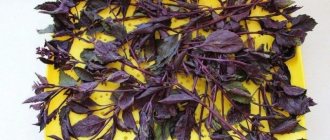When to collect fireweed
Fireweed angustifolia, Koporye tea or fireweed is a honey plant belonging to the fireweed family. Representatives of this species are distributed in all regions of the Northern Hemisphere with a temperate climate. Willow-herb prefers sandy or loamy areas and grows in clearings, clearings of mixed and coniferous forests, on fires and drained peat bogs, in thickets of bushes and on the banks of reservoirs. Refers to the number of plants that are the first to appear in deserted areas.
Willow-herb has an erect stem up to one and a half meters long, sharp linear-lanceolate leaves and lilac or light pink flowers collected in a long apical raceme. On the thick and creeping roots of the plant there is a huge number of adventitious buds that promote vegetative propagation.
Procedure for collecting fireweed
Most often, the leaves of fireweed are used for medicinal purposes, less often its inflorescences and roots. The seeds of the plant do not have medicinal properties, so they are collected only for the purpose of sowing the plant in certain areas.
The roots of fireweed are harvested in April-May or September after the end of the flowering period. The rhizome of the plant is dug up, the adhering soil is shaken off and washed thoroughly.
The leaves and inflorescences of fireweed are harvested during the flowering period , that is, from late June to early September. Medicinal raw materials are collected in the morning after the dew has completely dried. In this case, the growing stem is carefully squeezed between the fingers and the leaves and flowers are torn off with a sharp movement from top to bottom.
During the collection process, the harvester must carefully ensure that insects and their larvae (especially forest bugs), ripe fireweed pods or the fluff contained in them do not get into the medicinal raw materials. Unsuitable for harvesting are plants that are too dusty, polluted, diseased or drying out, growing along busy roads, on the territory of industrial enterprises, near farms, cattle burial grounds or landfills.
Factors that affect shelf life
The preservation of fireweed properties is influenced by the following factors:
- Correctness of the workpiece . It needs to be collected at the right time of year.
- Processing method . It lasts the longest when dried.
- Ambient temperature . It should be warm, but not higher than +25°C.
- Package . It should close tightly.
Preparation of fermented Koporye tea
In most cases, fireweed leaves are used to make a special drink - fermented Koporye tea. In such situations, the cooking process includes two successive stages:
- fermentation of prepared raw materials;
- drying leaves.
In order to start the process of fermentation of plant materials, it is necessary:
- thoroughly rinse the collected leaves with cold water and dry them for 3 hours in a place protected from sunlight;
- Gently rub the withered leaves in your palms, achieve the destruction of the structural cells of the plant and saturate the medicinal raw material with cell juice;
- tightly fill any glass container with ground leaves, cover it with cling film and place for 20 hours in a darkened room with a temperature of about 24 degrees.
After the procedure is completed, the leaves change color from dark green to light brown, and the smell changes from a pronounced herbal to a delicate fruity one. It should be noted that there are other methods for fermenting fireweed, but the described scheme is the simplest and most accessible for implementation at home.
The resulting vegetable mixture is loosened, spread in a thin layer on a baking sheet and dried in the oven or in the cooking chamber of a Russian oven at a temperature of about 100 degrees. In order to avoid drying out the raw materials in the oven, open the door slightly and place ceramic tiles or red bricks under the baking sheet. During the drying process, Koporye tea is constantly stirred, preventing the leaves from burning. On average, drying the plant mass takes about an hour.
The finished tea, which has a light brown or brown color and a pleasant fruity aroma, is packaged in a hermetically sealed food container that does not have any foreign odors, and is kept for a month at room temperature. During this time, the plant material undergoes secondary dry fermentation.
Preparing for drying
With proper preparation, the herb will be aromatic when brewed, and its taste will be unusually pleasant. To begin with, the leaves are rolled by hand into so-called “sausages” - elongated tubes of small thickness. This action causes the release of juice from the leaves.
Attention!
As soon as the color of the leaves darkens, they stop rolling it.
You can replace rolling by rolling out the leaves with a rolling pin. Press the collected grass with a rolling pin for several minutes until the fireweed darkens.
Another method of preparation requires physical strength. Fireweed is laid out on a piece of fabric in an even layer, and then the fabric is tightly rolled into a rope. During the rolling process, the fabric should become slightly damp due to the liquid released from the plant.
Fermentation method
The process of preparing fireweed is called fermentation. The air oxidizes the leaves and flowers, and also triggers fermentation in them. As a result of oxidation, anaerobic microorganisms are formed, which die during heat treatment. Fermentation significantly improves the healing ability of the herb and its taste, so it is better not to neglect it.
The process is classified into several types based on duration. Depending on the fermentation time, the tea turns out green, red or black.
Easy fermentation
Involves fermentation of tea for 3-6 hours. The finished product is green in color with a mild taste and delicate aroma;
Medium fermentation
Fermentation takes at least 12-16 hours. Tart notes appear in the taste of tea, and the color turns red;
Deep fermentation
The process lasts at least 24 hours. The tea tastes strong and its color is dark brown.
The prepared leaves (with the released juice) are placed in a pan, and they are pressed together to increase the amount of juice. They are covered tightly with a plate on top and heavy oppression is placed. The fermentation time is optional. However, it should be remembered that if tea is kept for more than 36 hours, it completely loses its healing abilities and taste.
How to properly store Ivan tea
How to store fireweed at home? Many citizens interested in a healthy lifestyle would like to know the answer to this question. These herbs can be a good tonic and give you more strength in everyday life. The technologies used in the process of collecting and storing this plant largely contribute to improving the taste properties and beneficial qualities.
How to ferment at home step by step
The most important process in tea preparation is the fermentation process. Fermentation is essentially a process of fermentation and oxidation that occurs when oxygen reacts with the sap secreted by the plant.
To fully ferment tea leaves, you need to go through several stages
This process not only allows the drink to acquire an excellent aroma, but also preserves beneficial microelements. We offer step-by-step instructions for the fermentation process; it is carried out in several stages.
Storage containers
It is necessary to store fireweed tea at home in containers specially prepared for this purpose.
Suitable for this:
- Glass bottles, regular jars, special containers, as well as other suitable containers;
- Ceramic teapots with lids
It is highly undesirable to use metal fireweed at home.
An industrially produced plant may not always have suitable packaging for long-term storage. That is why the grass must be poured into other containers. To ensure a sufficiently high level of tightness of glass and ceramic containers, it is advisable to use plastic film with elastic bands for fixation.
Drying and storage
Proper willow tea at home will always require some effort. Some lovers prefer to scatter the tea leaves in a thin layer in some place protected from sunlight. If tea is allowed to erode during drying, its flavor and aroma properties will gradually be depleted. Therefore, many people use special fermentation technology to prepare fireweed tea.
Sequencing:
- You need to leave the collected leaves in the shade for about a day in order to wither them a little.
- After this, you need to carefully roll all the dried petals in your palms until the juice begins to come out of them. After this, small tubes are formed, visually reminiscent of cigars.
- After this, you need to lay out the treated petals in a wooden box, covering it with a damp piece of cloth for about 18-20 hours.
- Then the cigars are scattered in a thin layer on a baking sheet.
- Drying is carried out in a slightly open oven for 30-40 minutes at a constant temperature of approximately 90-100 degrees.
This labor-intensive process is well worth the effort. To ensure that the aroma of tea remains exquisite, it is advisable to choose glass containers for storing it.











